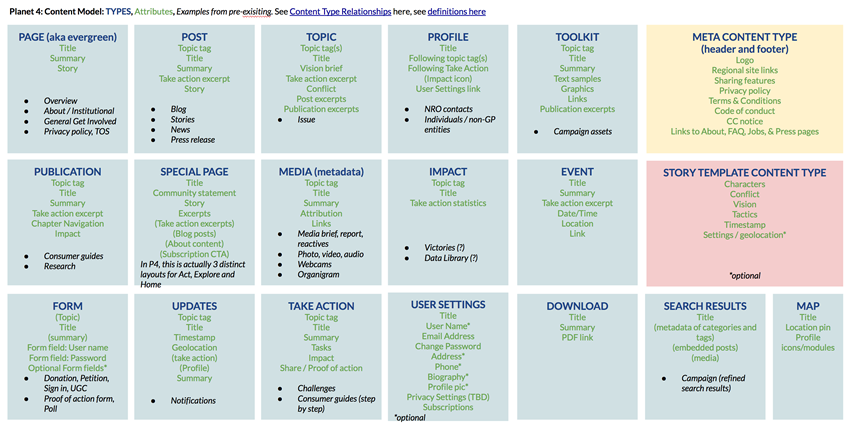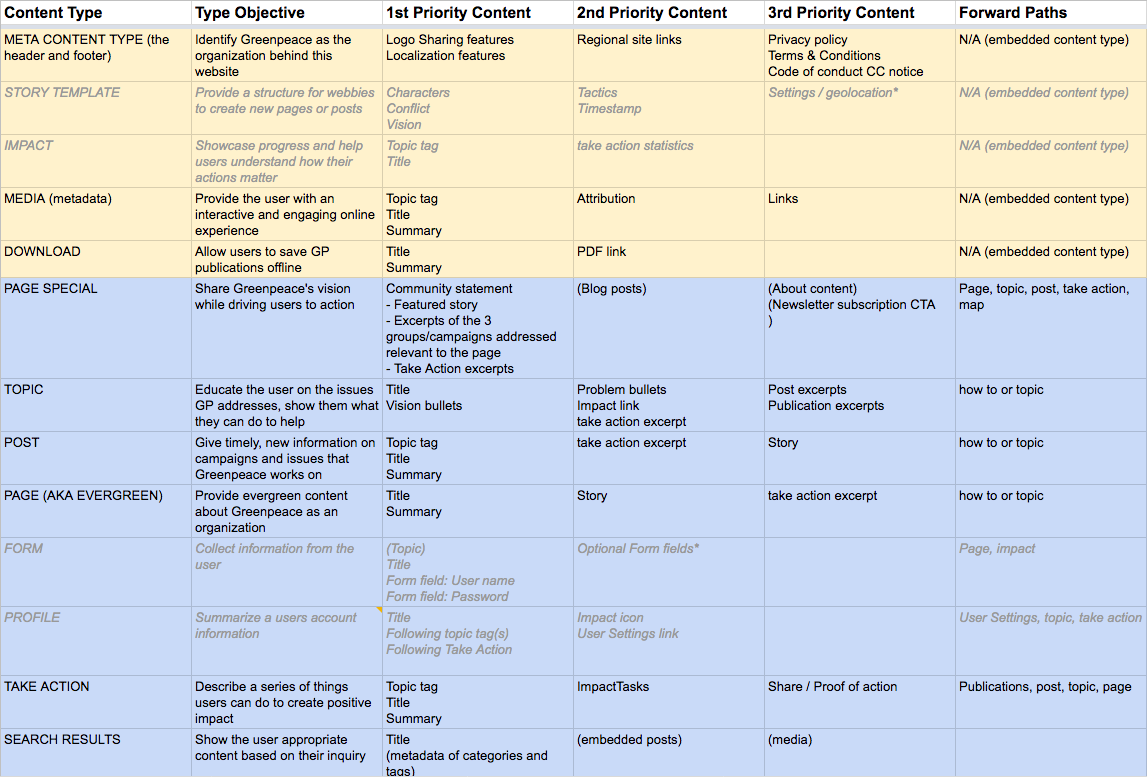From individual actions to coordinated global campaigns, the content we produce for the web and beyond represents a community of millions. We need to follow content creation processes that allow for creativity and freedom, but are connected to functionality. This is why we need a content strategy. For P4 it is made up of three parts: content model, page – type relationships, and taxonomy.
⚠ Page is outdated. Check back soon!
Create change
P4 is all about engagement and empowering supporters. Content should reflect this. Try and find a balance between Issue and Action. With all our content we try and follow this information and engagement process that places the supporter at the centre.
Inform (about the issue ) / Highlight (the problem) / Explain (what we are doing) / Engage (offer actions for the supporter).
We always try and end on a positive note so the supporter feels the problem/issue isn’t too big and that they feel empowered to make a difference.
In terms of design, we study the style guides for each basket, if available.
We are here to change mindsets. It’s time to help people believe that a better world is possible through openness, community and collective action.
Every communication we create and every action each of us takes must reinforce this core insight. Our moral is what we stand for, our theory of change and our mantra.
Content Model
The content model describes what each piece of content should have. Content models can get really complicated. The Planet 4 team got inspired by this and this and this to define a model for the new greenpeace.org.

In her article Content Modelling: A Master Skill, Rachel Lovinger describes a content model as
“[a method] to represent content in a way that translates the intention, stakeholder needs, and functional requirements from the user experience design into something that can be built by developers implementing a CMS.”
Building off our design principles, all of the content created for P4 by design is action-oriented. This means that every piece of content will lead to some kind of call to action for the site visitor.
This overview of the model created for P4 clarifies the requirements and encourages collaboration amongst all of the makers of this project.
This spreadsheet highlights attributes that describe the requirements for that piece of content. Grayed out, italicised types in this document indicate future content types that will be accessible in P4.

Page-Type relationships
Which page has which content types? Which pages must never have certain content types?
The page — type relationships developed for Planet 4 are fairly intuitive, and by creating and analysing them, we identified priorities for each page layout.
The content of the Planet 4 prototype will adhere to both model and page-type relationships, and will serve as example and reference for future Planet 4 content.
Taxonomy
One of the innovative features that Planet 4 will introduce is an organic navigational structure. Nowadays, the vast majority of greenpeace.org users enter the website through social media and specific content shares.
This means that direct access to (and navigation from) the home page will not drive the way we structure and push content. Taxonomy, or categorization, of content represents the main navigation tool across Planet 4.


|
Links & Resources
- Handbook
- MEDIUM
- DOCS
- P4 page-type relationships – Drawing
- P4 Content model – Google Docs
